Old Norse mythology is filled with fascinating symbolism, and the runic alphabets of Germanic Europe have told numerous tales of heroic deeds and tragic deaths over the years. Having worked with graphic design for most of my adult life, I’m a huge fan of typography and symbolism, and also a huge history nerd. So I’ve spent a lot of time studying and appreciating the Viking symbols left behind on runestones, jewelry, weapons, armor, and other items from the Viking Age.
But the world of Norse symbols is not without its controversies and misconceptions; from extremist groups trying to hijack the symbols to serve their agendas, to magical sigils with questionable historical accuracy spreading like wildfire among millennials (I’m looking at you Vegvisir).
So let’s clear some things up and go through the facts and myths surrounding Norse runes and symbols, how they look, and what we know about their meaning.
Hopefully, you’ll find this as fascinating as I did, and learn a thing or two along the way.
ℹ️ For the past 10 years, I’ve studied Nordic symbolism of all kinds, with a specific focus on the Norse world during the Viking age. In this article, I’ve listed Norse runes and symbols that have been found in Scandinavia and dated back to the Viking age. I’ve specified the source of each symbol, such as a specific runestone or piece of jewelry, so you can look into it further if you feel like digging deeper.
For the sake of clearing up common misconceptions regarding Viking symbols, I’ve also included some symbols that are commonly and mistakenly thought to be connected to the Vikings, and explained why these symbols have not been found to be linked to the Norse people or culture.
Let’s start by looking at the Runes, the letters of the Old Norse language the Vikings spoke, after which we will look at some of the symbols from the Viking Age specifically.
Rune Circle Metal Wall Art
Metal wall art featuring and inspired by designs found in archeological sites from Viking Age Scandinavia. Free shipping worldwide.
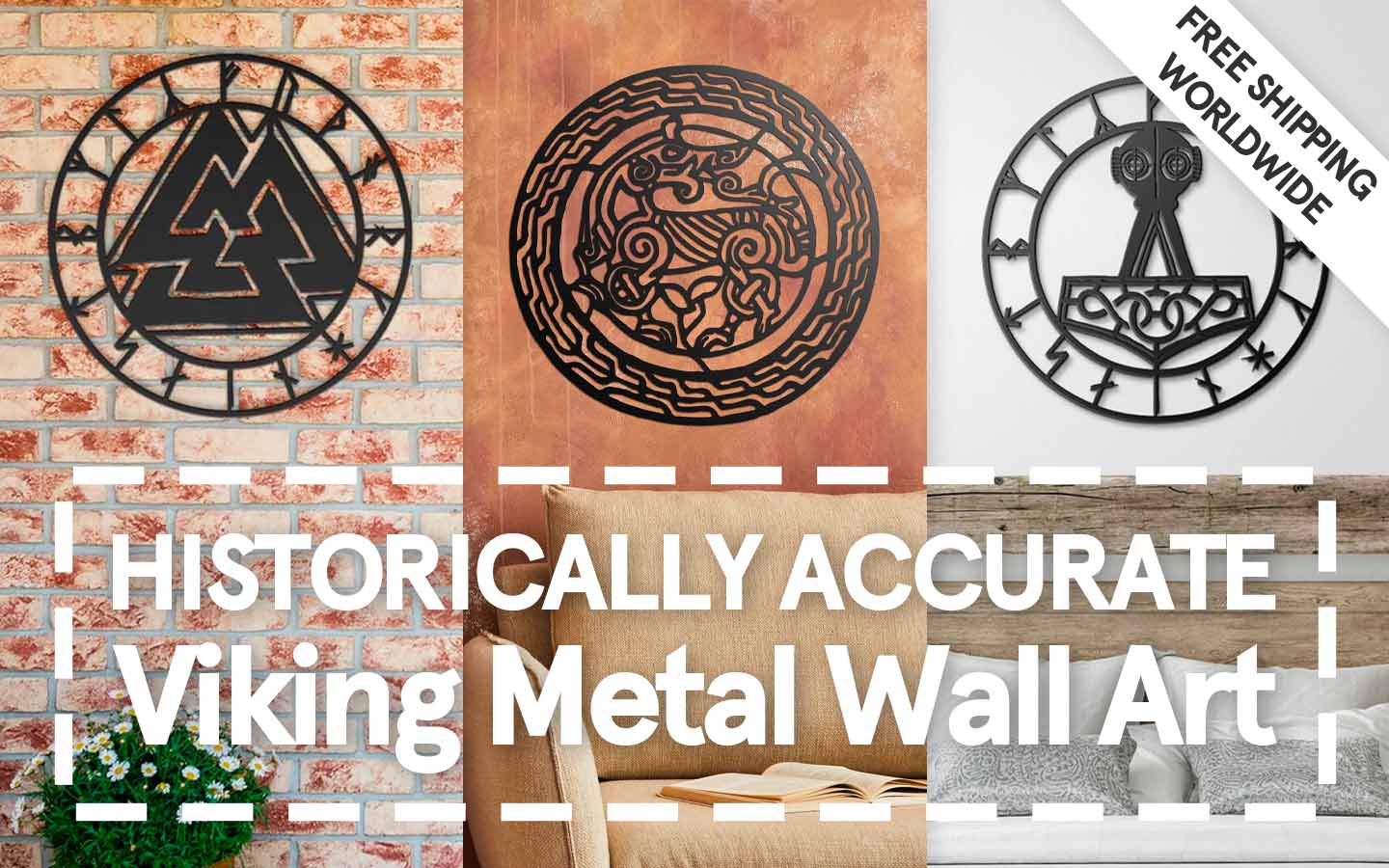 Visit Our Shop
Visit Our Shop
Germanic and Norse Runes in Scandinavia: A Timeline
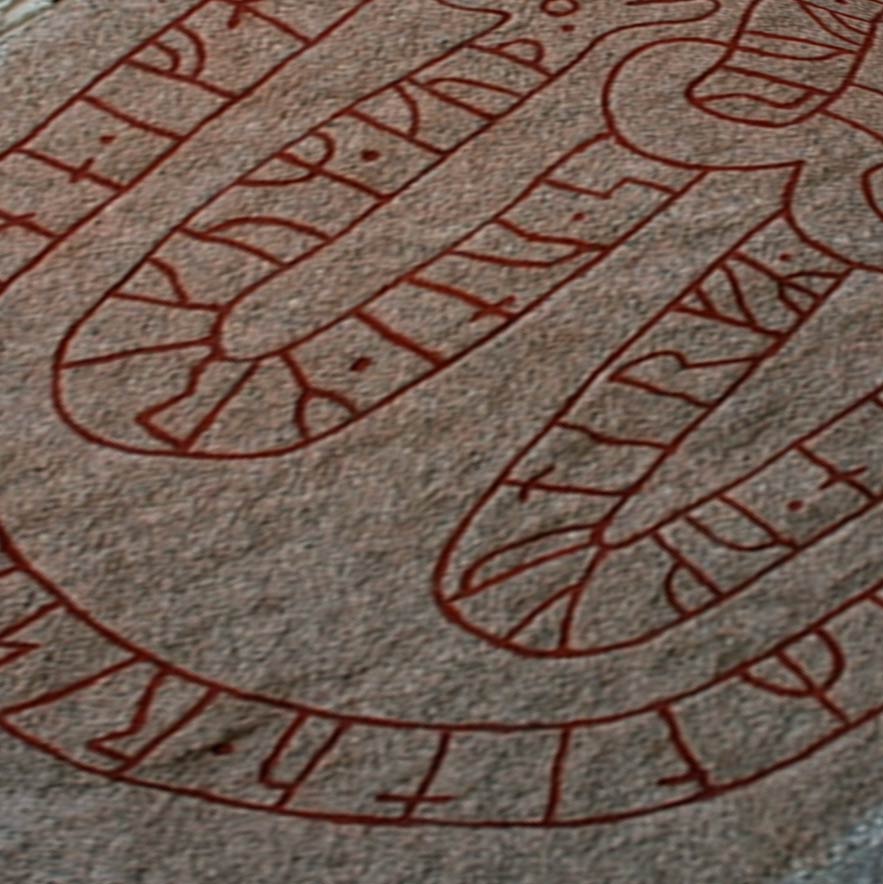
Elder Futhark Eunes

Younger Futhark Runes
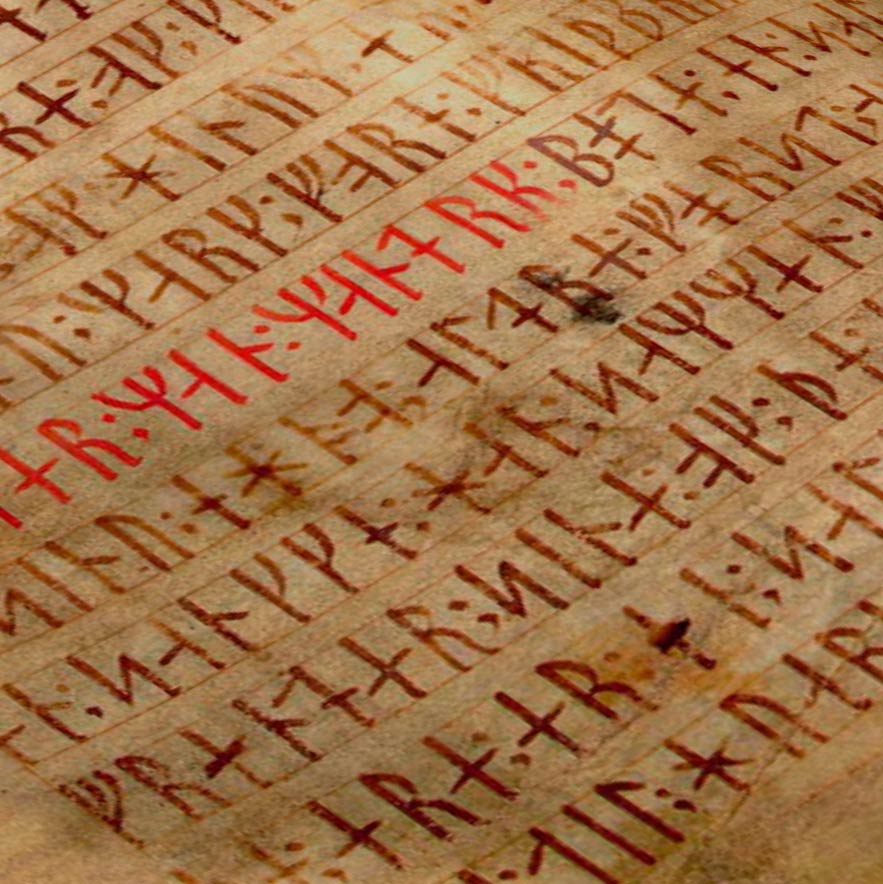
Medieval Runes
When tales were told of Viking adventures, they were generally written down in Old Norse on runestones using the Younger Futhark runic alphabet (used in Scandinavia during the Viking Age).
This is also what people look for when it comes to Nordic lettering in general, so I feel like it’s fitting to start here, and then dive into both older and newer runic alphabets afterward.
Viking Age Scandinavian Runes & Their Meanings (Younger Futhark)
The Scandinavian Younger Futhark is a simplified version of the Germanic Elder Futhark, with 16 (instead of 19) characters specifically tailored for the Old Norse language.
By the time the Viking Age took off around 800 CE, Younger Futhark was the dominant alphabet in Scandinavia, and is the one you’re most likely to see on runestones and other objects from the Viking Age.
I’ve listed all the Old Norse runes as well as their Latin letter equivalent below:
Each rune is a letter in the Old Norse alphabet, and as such they all represent a sound similar to the Roman/Latin letters we use in the western world today. However, they also carried names that can sometimes be construed as a separate meaning associated with the rune, which runologist Victoria Symons explains in her book Runes and Roman Letters in Anglo-Saxon Manuscripts as she compares runes to Roman letters:
Runic letters, on the other hand, are inherently multivalent; they can, and often do, represent several different kinds of information simultaneously. This aspect of runic letters is one that is frequently employed and exploited by writers and scribes who include them in their manuscripts.
Victoria Symons in Runes and Roman Letters in Anglo-Saxon Manuscripts (2016), p. 6-7
So it’s also important to note that although we have found plenty of evidence of the runes being used both as letters and as symbols with further meanings, each individual rune may not always have carried multiple meanings on top of the sound it made and the words it created in combination with other runes.
Meanings and Explanations of the Viking Runes (Old Norse Alphabet to English)
| Rune | Latin Letter | Old Norse Sound/Name — Meaning or Explanation in English |
|---|---|---|
| F | Fé — Beast, cattle, wealth | |
| U | Úr — Clock, aurochs, primordial power | |
| TH | Thurs — Thor (Norse god of thunder, one of the more prominent Æsir, origin of “Thursday”), giant, troll | |
| Ą / O | As / Oss — Æsir, i.e. the gods in Norse mythology | |
| R | Reið — Ride, journey, wagon | |
| K | Kaun — Wound, ulcer, fire | |
| H | Hagall — Hail (as in “it’s hailing outside”) | |
| N | Nauðr — Need, force, danger | |
| I | Íss — Ice | |
| A / Æ | Ár — Plenty | |
| S | Sól — Sun | |
| T | Tyr — Norse god of war and justice, origin of “Tuesday” | |
| B | Bjarkan — Birch | |
| M | Maðr — Man, human | |
| L | Lögr — Water, Sea | |
| ʀ / Y | Yr — Yew (a tree with an especially long life) |
The Younger Futhark runes were also divided into two different styles: Long-branch runes and Short-twig runes.
Some argue that they were used depending on location; with Long-branch runes primarily used in Denmark, and short-twig runes primarily used in Sweden and Norway.
Others believe that instead of specifically Swedish, Danish, or Norwegian runes, their usage was more of a practical matter: If you wanted to write on stone, you used Long-branch runes, and if you wanted to write on wood, you used Short-twig runes.
| Long-branch runes | ᚠ | ᚢ | ᚦ | ᚬ | ᚱ | ᚴ | ᚼ | ᚾ | ᛁ | ᛅ | ᛋ | ᛏ | ᛒ | ᛘ | ᛚ | ᛦ |
| Short-twig runes | ᚠ | ᚢ | ᚦ | ᚭ | ᚱ | ᚴ | ᚽ | ᚿ | ᛁ | ᛆ | ᛌ | ᛐ | ᛓ | ᛙ | ᛚ | ᛧ |
| Latin letters | f | u | th | a | r | k | h | n | i | a | s | t | b | m | l | ʀ |
I’ve seen many runestones in Sweden with Long-branch runes, so I am partial to the practical divide theory; that you used whatever type of rune was more practical for the medium you wrote/carved on.
For instance, here is a runestone I came across in Uppsala, Sweden that features long-branch runes:
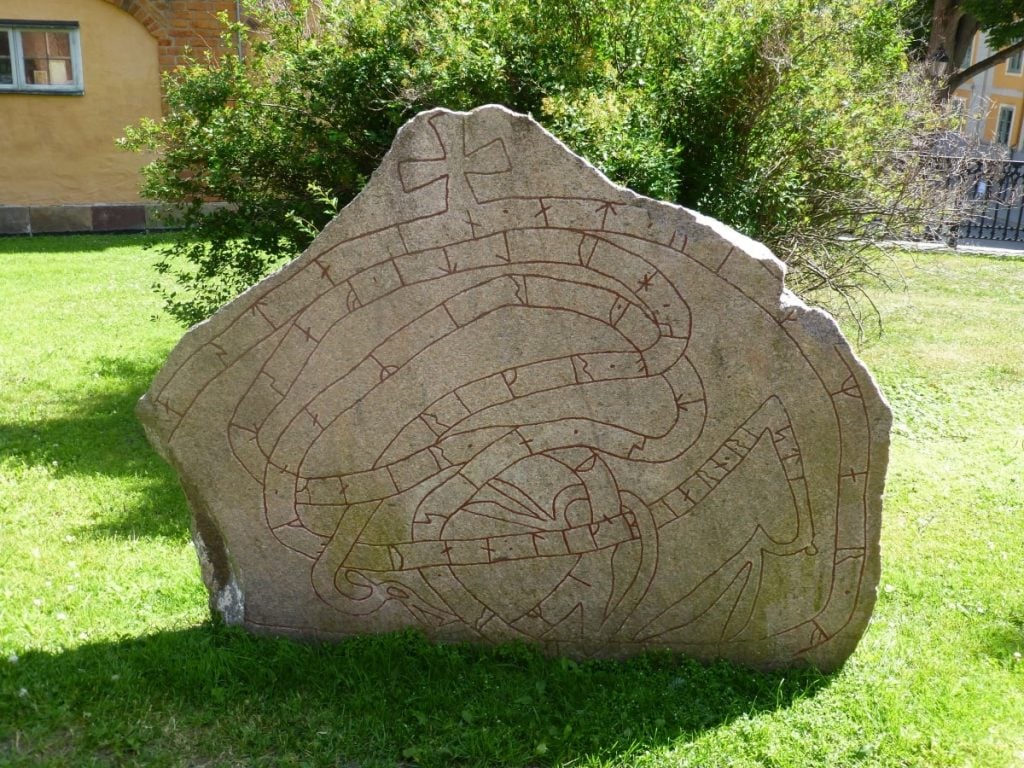
What Do Upside-Down Runes Mean?
Since runes are mostly equivalent to our modern-day alphabetical letters, writing them upside down doesn’t change the sound they are attached to. This is especially relevant in many of the runestones, where the runes are written in circles and other irregular patterns, instead of on a straight line as we tend to do today.
We haven’t found any indication that they would mean something different upside-down when they were used in a way that would convey their inherent meaning (i.e. ᛋ = sun).
Next, let’s go back in time and look at when people in Scandinavia started using runes, which takes us all the way back to the Iron Age.
Germanic Runes and Their Meanings (Elder Futhark)
The Elder Futhark Runic alphabet consists of 24 runes, and was in use across all Germanic cultures since the Iron Age (starting around 200 CE), and in Scandinavia specifically deep into the Viking Age.
In other words, this is the first runic alphabet the Norse people (a.k.a. the Vikings) started using on their runestones, weapons, jewelry, etc.
It started being replaced by Younger Futhark around 700-800 CE, and was no longer in use by the 10th century CE, when the Viking Age was at its height.
The Elder Futhark started being used in Scandinavia around 600 years before the Viking Age started, but was still used by Vikings early on, before Younger Futhark took over completely.
The Proto-Germanic language spoken in Scandinavia and Northern Germany spread across Europe with the Germanic migrations that spurred on the fall of the roman Empire, and the Germanic Runes could be found across most of the European continent during the Iron Age.
Here’s how the Germanic language and runes spread across Europe and the extent of the Germanic migrations around the fall of the Roman Empire.
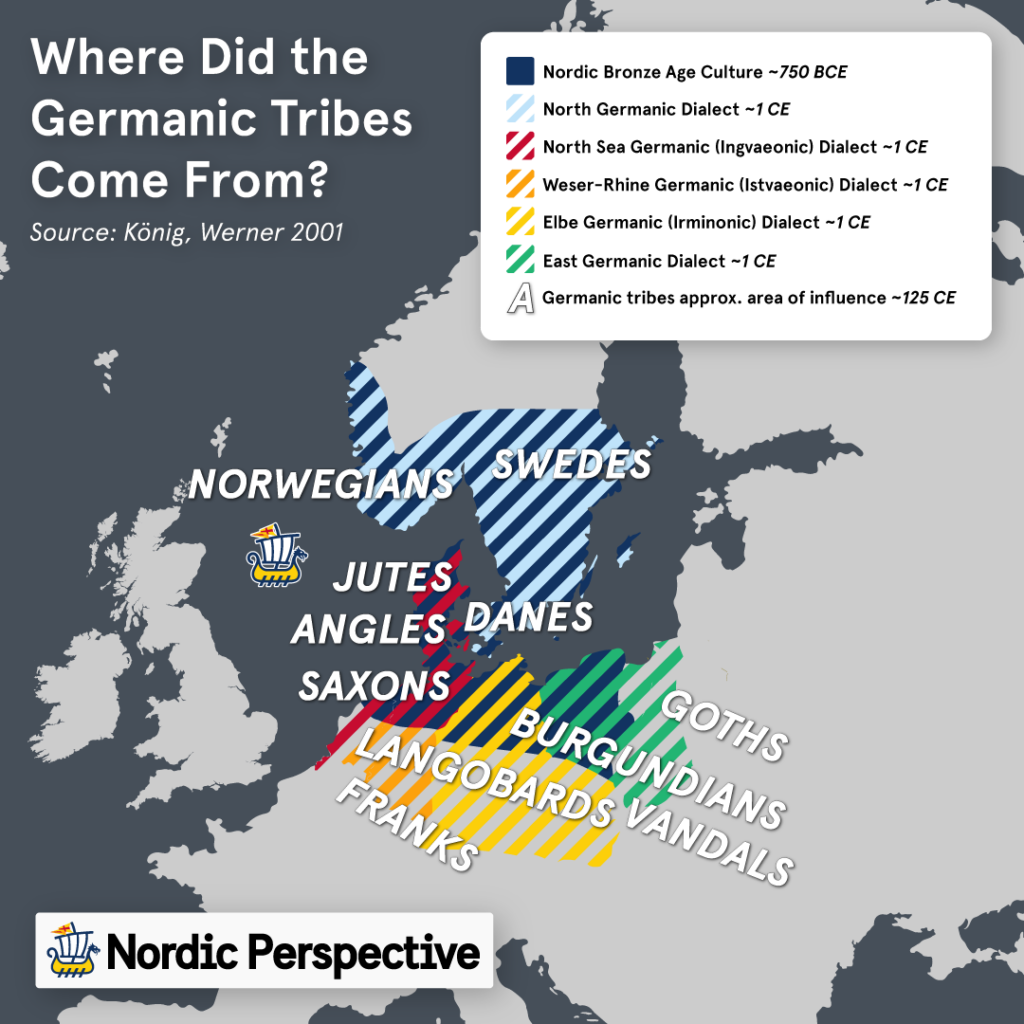
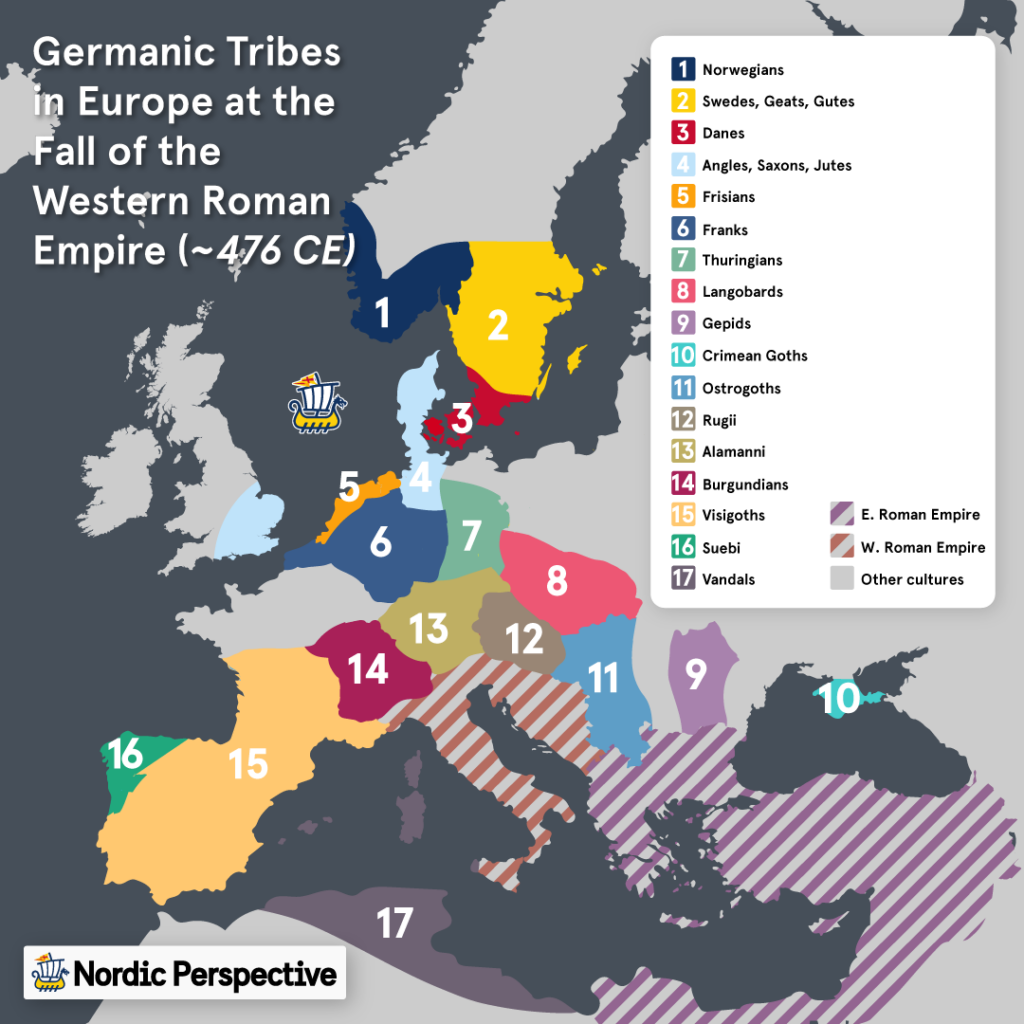
The Elder Futhark runic symbols were usually written as a rune row divided into three ætts (meaning “eights”, with eight runes in each ætt). The first ætt is Frey’s, the second is Hagal’s, and the third is Tyr’s (the names of the first letters of each ætt).
Below this is visualized in three rows:
The Meanings Attached to Elder Futhark Runes
As they both stem from the Nordic Bronze Age culture and language, the Germanic and the Scandinavian runes have the same meanings and origins.
However, due to differences in pronunciation and style in the Proto-Germanic and Proto-Norse languages, the names and sounds are slightly different (and there are of course 3 more runes).
| Rune | Latin Letter | Germanic Sound/Name — Origianal Meaning |
|---|---|---|
| F | Fehu — Beast, cattle, wealth | |
| U | Uruz — Clock, aurochs, primordial power | |
| Þ | þurisaz — Thurs/Thunraz(god of thunder, one of the more prominent Æsir, origin of “Thursday”), giant, troll | |
| A | Ansuz — A Norse god, an Æsir | |
| R | Raido — Ride, journey, wagon | |
| K | Kaunan — Wound, ulcer, fire | |
| G | Gebö — Gift | |
| W | Wunjo — Joy | |
| H | Hagalaz — Hail (as in “it’s hailing outside”) | |
| N | Naudiz — Need, force | |
| I | Isaz — Ice | |
| J | Jera — Year, good year, harvest | |
| Æ | Ihwaz — Yew-tree, evergreen tree | |
| P | Perþ — Cliff, earth, rock* | |
| Z | Algiz — Elk, protection, defense | |
| S | Sowila, Sol — Sun | |
| T | Tiwaz, Tyr — God of war and justice, origin of “Tuesday” | |
| B | Berkana — Birch | |
| E | Ehwaz — Horse | |
| M | Mannaz — Man, human | |
| L | Laguz — Water, lake | |
| Ŋ | Ingwaz/Ing/Frey — God of fertility, Frey is the origin of “Friday” | |
| O | Oþilaz, Oþala — Dynasty, heritage, estate, possession | |
| D | Dagaz — Day |
Later Scandinavian Runes: the Futhork & Dalecarlian Alphabets
The Viking Age is generally agreed by historians to have ended with the successful invasion of England by William the Conqueror (who was a Norman of Viking descent ironically), specifically the decisive Norman victory at the Battle of Hastings in 1066.
Scandinavia slowly started getting Christianized around the same time, and as continental European influence grew in the region, the language slowly expanded.
The Old Norse language started including sounds from the Latin alphabet, and the use of stung or dotted runes to indicate alternate sounds for specific runes started to become more and more common.
Despite the strong influence of the Latin alphabet, the people of Scandinavia did not stop writing in runic script. Instead, the Younger Futhark runes that had been in use during the Viking Age were expanded into a new runic alphabet that included ways to write out all the sounds of the Latin alphabet.
The Medieval Runic Alphabet: Futhork
The Medieval runic alphabet also had 16 runes, just like Younger Futhark, but each rune had variations that could form all the sounds latin letters could.
Interestingly, one of the oldest books preserved written with medieval runes is this copy of the Scanian law book, which is from the region I live in:
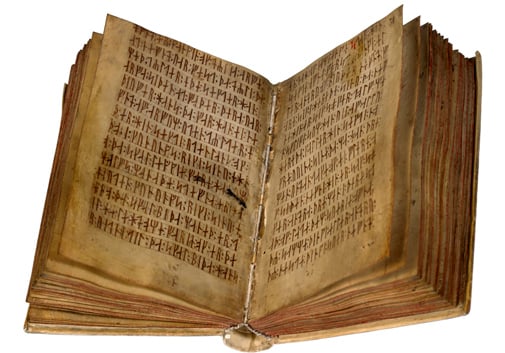
Dalecarlian Runes (late 1500s to 1900s)
The Runic alphabets had disappeared from Scandinavia almost completely by the 1500s, but the Swedish regions of Dalarna and Gotland people kept the runic alphabets alive, in Dalarna specifically all the way into the early 1900s.
Here’s how the Early Dalecarlian Runes looked like:

Here’s how the late Dalecarlian Runes looked like:
Real Viking Age Symbols: Separating Fact From Fiction
The Old Norse culture was rich in symbolism, and there were many inscriptions, ornaments, pendants, pins, and other accessories left behind for us to get an insight into the popular symbols of the Viking Age.
But there are also a lot of misconceptions floating around on the interwebs regarding viking symbolism, so I’d like to try to separate fact from fiction by grouping the real Viking symbols we for sure know are from the Viking Age, apart from mostly modern symbols we have not been able to link to Viking Age Scandinavia.
The Real Viking Symbols: Authentic Norse symbols dating back to the Viking Age
The Norse people of Scandinavia loved to carve pictures of Norse gods and other mythological creatures, along with tales of their own deeds onto runestones, jewelry, weapons, shields, helmets, and all kinds of other objects.
Luckily, we have been able to find many such examples that are still intact, giving us a pretty good idea of the types of symbols and ornaments the Vikings used and valued.
Here are some of the more famous symbols that have actually been found on objects dating back to the Viking Age in or around Scandinavia (meaning they are as authentic as can be):
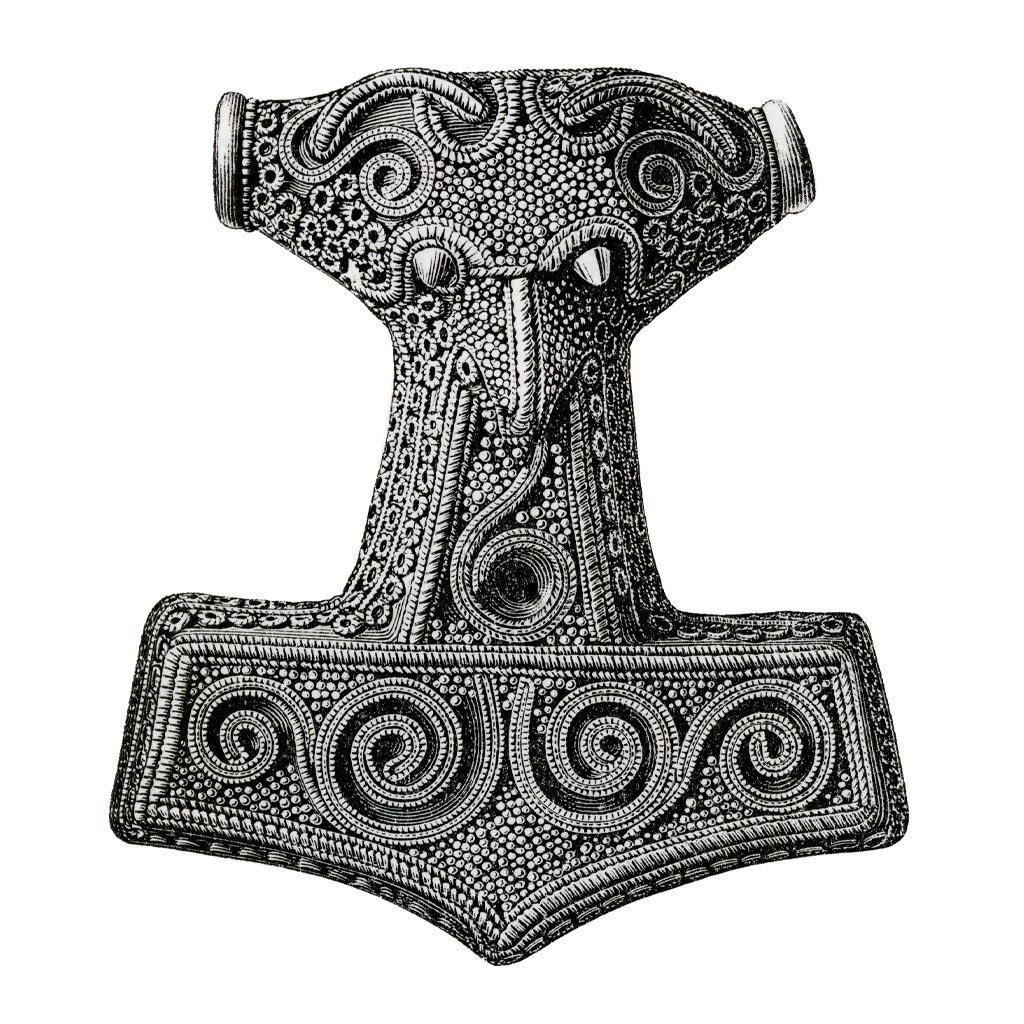
Mjölnir
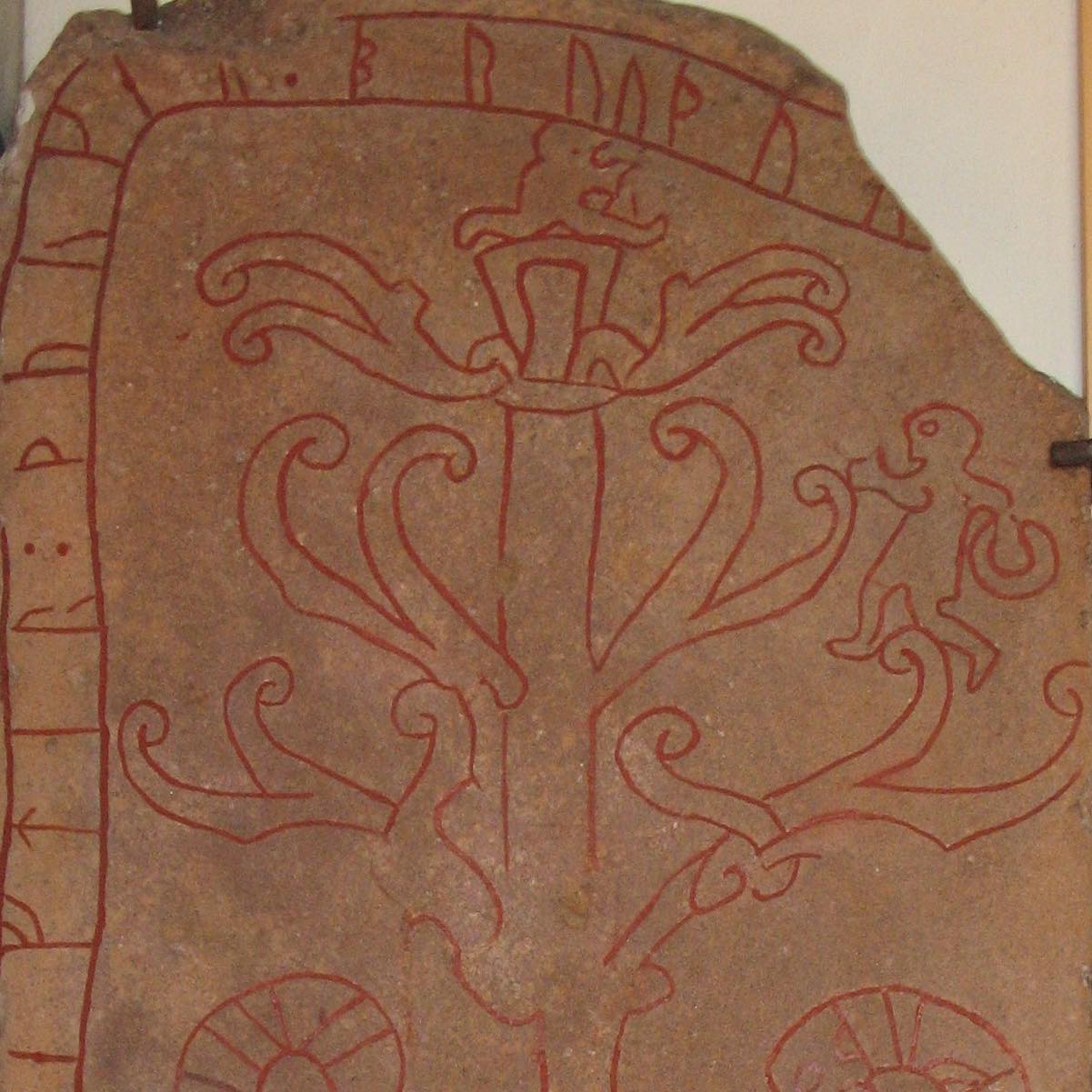
Yggdrasil
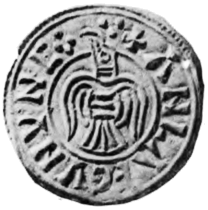
Hrafnsmerki
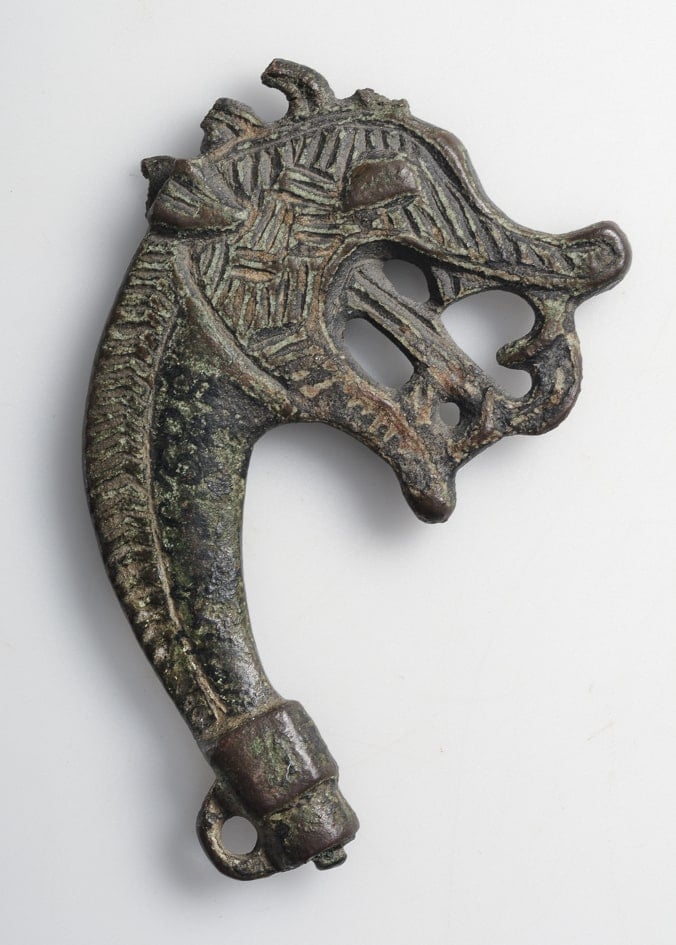
Dragon’s head
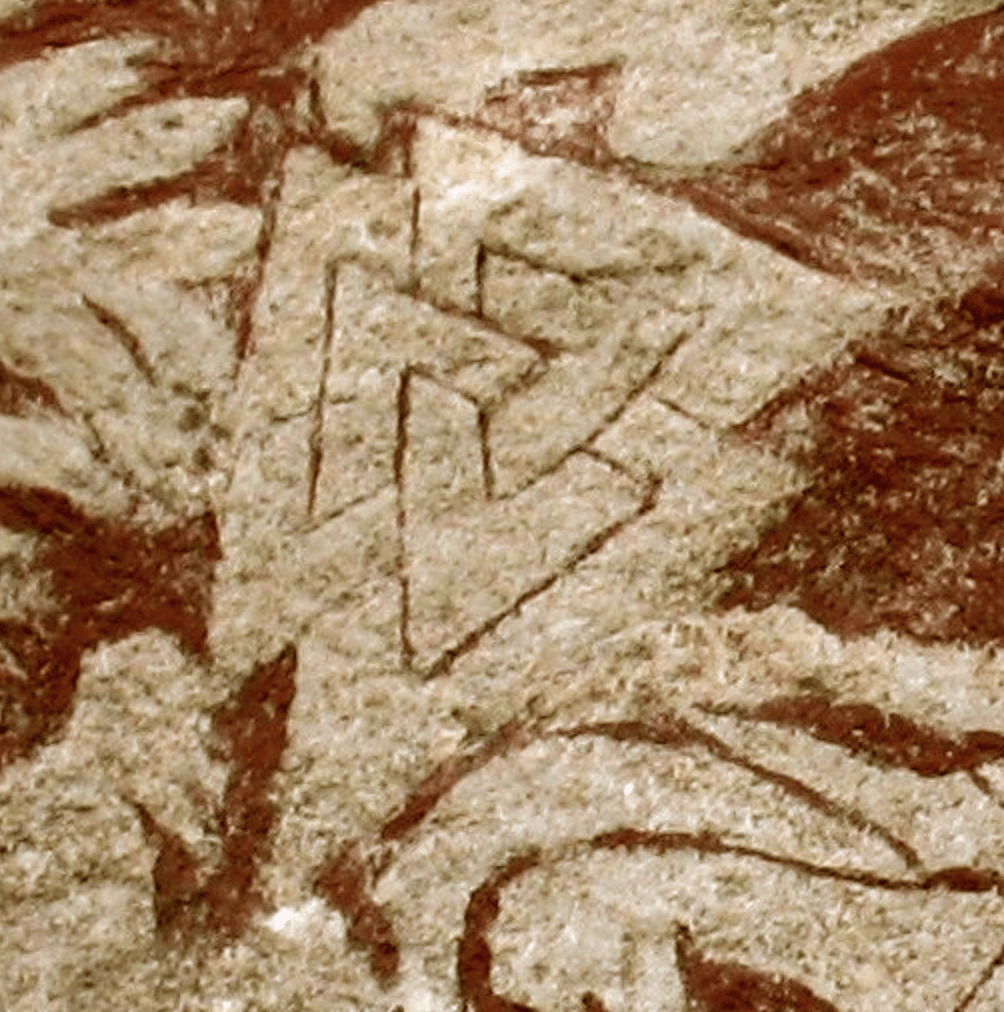
Valknut
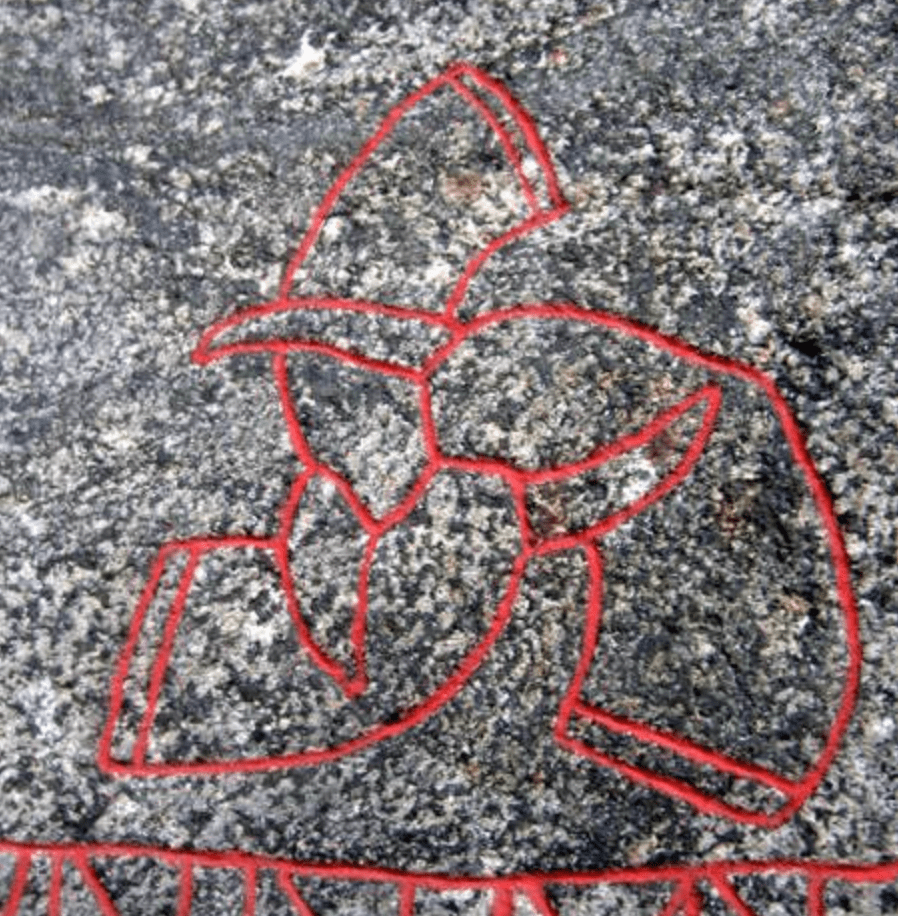
Triskele
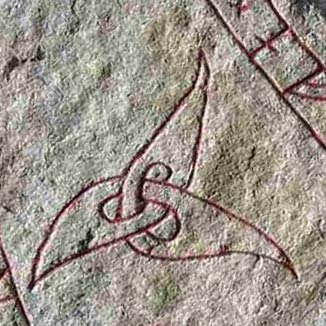
Trikvetra

Sleipner
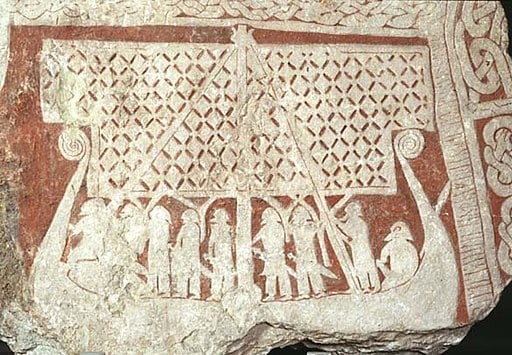
The Longship
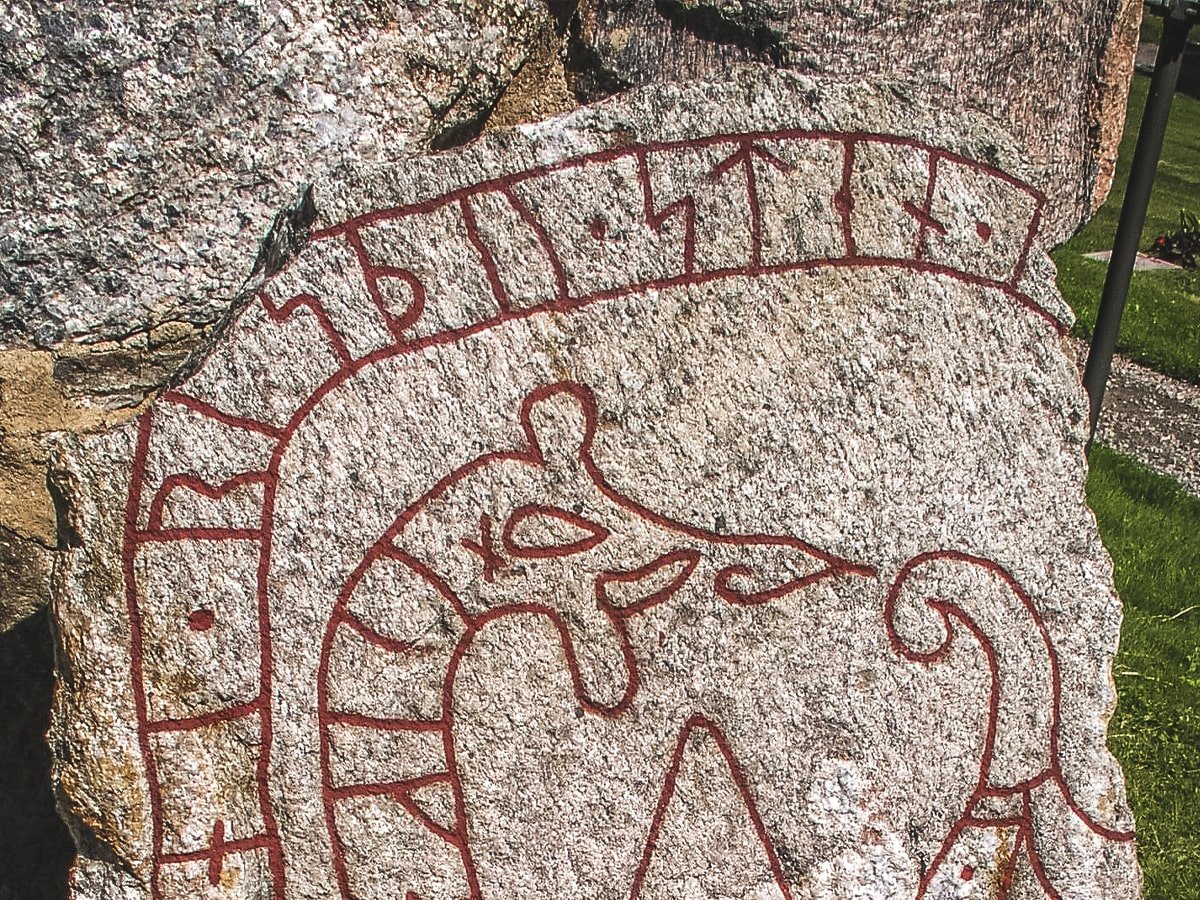
Jörmungandr
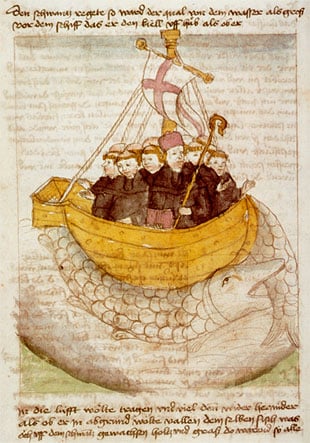
Kraken / Hafgufa
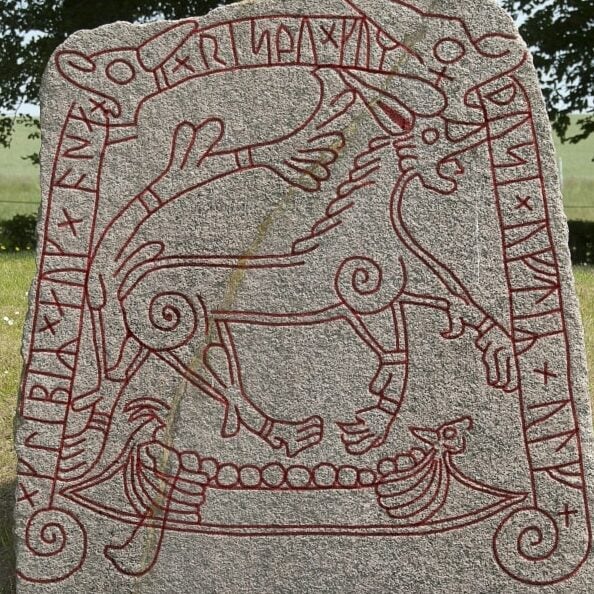
Fenrir
Read more about Fenrir
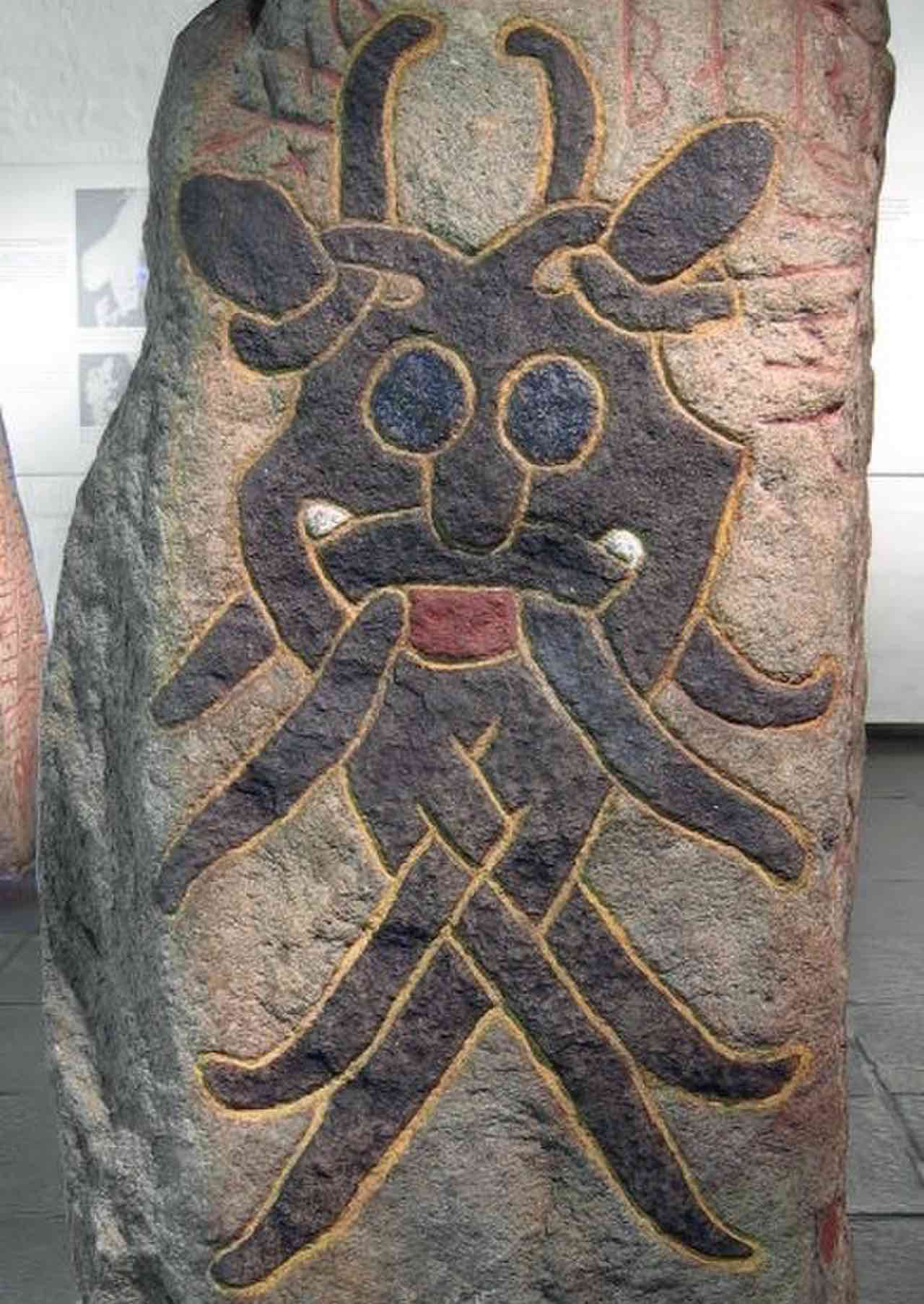
Odin’s head
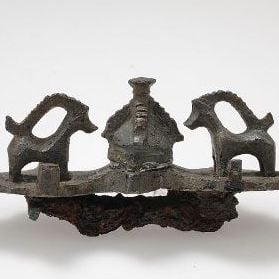
Tanngrisnir and Tanngnjóstr
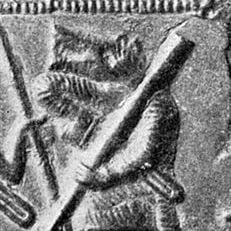
Bear’s Head
Those are a few of the most famous Viking Age symbols we’ve found so far, but there are of course countless more depicted on all the runestones, jewelry, weapons, armor, and other objects from the Viking Age.
If all you’re interested in are historically accurate Norse symbols and runes, this is a good place to conclude your reading.
For those who are interested in finding out more about symbols that are not actually linked to Vikings and the Norse culture, but are commonly referred to as such anyway, let’s keep going to the murkier waters of Norse symbolism: the ahistorical symbols.
The False Viking Symbols: Nordic Symbols Commonly (But Likely Mistakenly) Linked to Norse Mythology
There are a whole bunch of symbols in use today that are assumed to be linked to the Vikings, but in reality have not been seen on any item found from the Viking age.
In some cases they’re mentioned in the sagas but never pictured anywhere, and in some cases they have just been popularized by pop culture or celebrities for no good reason.
They may be designed in a style befitting of the era, and they sure look cool — but you should know that there is very little that points to the symbols below actually being used by the Norse people who came from Scandinavia during the Viking age.
Nonetheless, here are some of the more popular symbols, or Icelandic staves as they technically are:
Vegvisir
A pathfinder sigil
Ægishjalmr
Herðslustafir
Svefnthorn
If you want to learn more about why these symbols may not date back to or be linked to the Viking Age, here’s Jackson Crawford’s (Old Norse specialist with a Ph.D. in Scandinavian Studies) very informative takes on the Ægishjalmur and Vegvísir respectively:
Dr. Crawford taught courses in Norse language, myth, and sagas at UCLA, UC Berkeley, and University of Colorado over the years 2011-2020, and is currently on a mission to teach full-time through YouTube & Patreon.
His videos are always informative, based on actual evidence, very thorough, and well worth a watch if you’re interested in the Old Norse world.
More Ahistorical Symbols: Rudolphs Koch’s Symbols in The Book of Signs
German typographer Rudolph Koch published a book in 1930 with 493 classified and documented illustrations – collected, drawn, and explained by himself.
Koch doesn’t really provide any sources for these symbols, but he does include most of the Younger Futhark runes, and somehow attributes the symbols below to either Nordic, Pagan, or Germanic origins:
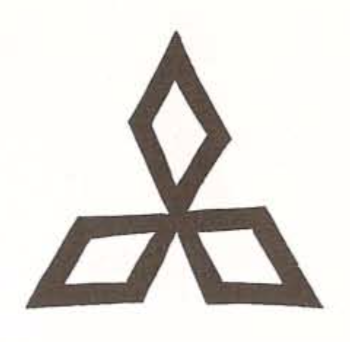
Triceps
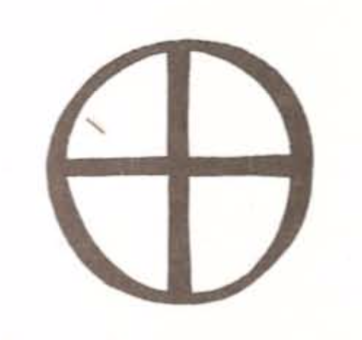
Sunwheel / The Cross of Wotan
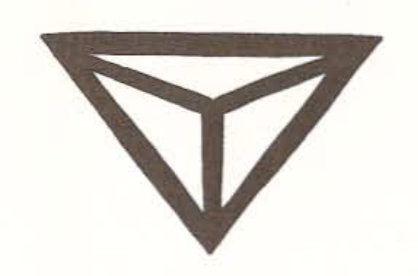
The Dragon’s Eye
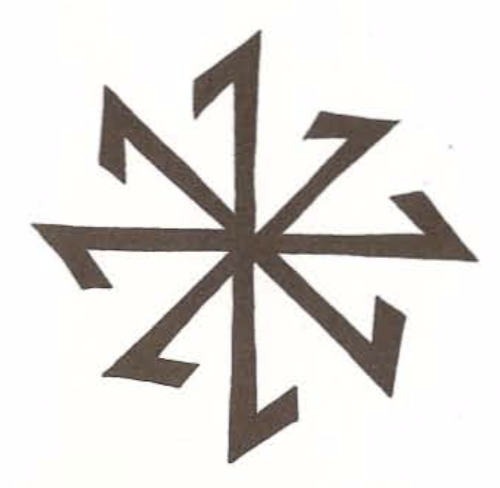
Eight-angled figure
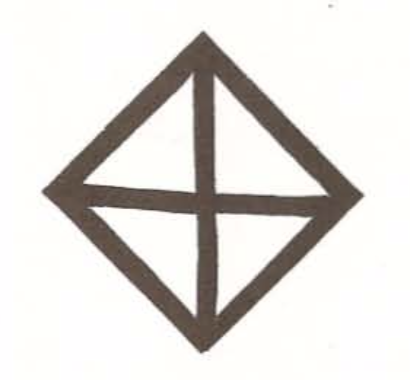
The Eye of Fire
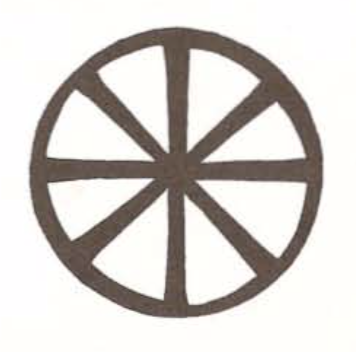
The Eight-spoked Wheel
None of these symbols have been found to have any type of connection to the Norse people of Scandinavia, nor even the Germanic people of Iron Age Europe, and to illustrate this we can look at how vaguely Koch describes his sources:
On many of the signs illustrated in this book the Nordic influence can be clearly traced, but the basic forms, with their wealth of significance and symbolism, undoubtedly take us back to the dim, remote and unfathomed ages of Mankind in the far Eastern countries of this World.
Rudolph Koch, The Book of Signs p. 104
In other words, take these meanings with a grain of salt (to say the least)!
By the way, if you're looking for some historically accurate viking apparel and wall art, I've designed a large collection of Norse wall art and apparel based on and inspired by actual archeological finds from Viking Age Scandinavia.
Shop Authentic Norse + Nordic Decor & Apparel
Premium museum-quality prints, metal wall art, t-shirts, sweatshirts, mugs and more — sent right to your doorstep with free shipping worldwide.
 Visit the NP Shop Now
Visit the NP Shop Now
Sources:
https://www.raa.se/kulturarv/runor-och-runstenar/att-lasa-runor-och-runinskrifter/
https://books.google.com/books/about/Runes_and_Roman_Letters_in_Anglo_Saxon_M.html?id=KQ5EDQAAQBAJ
http://www.e-codices.unifr.ch/en/csg/0878/1
https://www.vikingeskibsmuseet.dk/en/professions/education/viking-age-people/runes
https://www.raa.se/kulturarv/runor-och-runstenar/digitala-sveriges-runinskrifter/
https://litteraturbanken.se/presentationer/specialomraden/RunornasLitteratur.html
https://manuscript.ku.dk/manuscript_types/law_manuscripts/
https://books.google.com/books/about/The_Book_of_Signs.html?id=dsuuKUag8EkC&redir_esc=y
https://jacksonwcrawford.com/list-of-videos/
Show more + Nordic and Scandinavian Languages Explained and Ranked
Nordic and Scandinavian Languages Explained and Ranked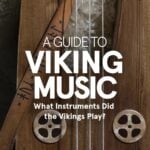 Viking Music: What Instruments Did the Vikings Play? (Examples)
Viking Music: What Instruments Did the Vikings Play? (Examples)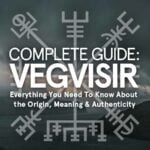 Vegvisir: A Complete Guide (Origins, Meaning & Accuracy)
Vegvisir: A Complete Guide (Origins, Meaning & Accuracy)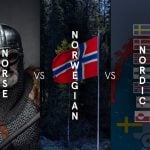 Norse vs. Norwegian vs. Nordic: Differences Explained
Norse vs. Norwegian vs. Nordic: Differences Explained

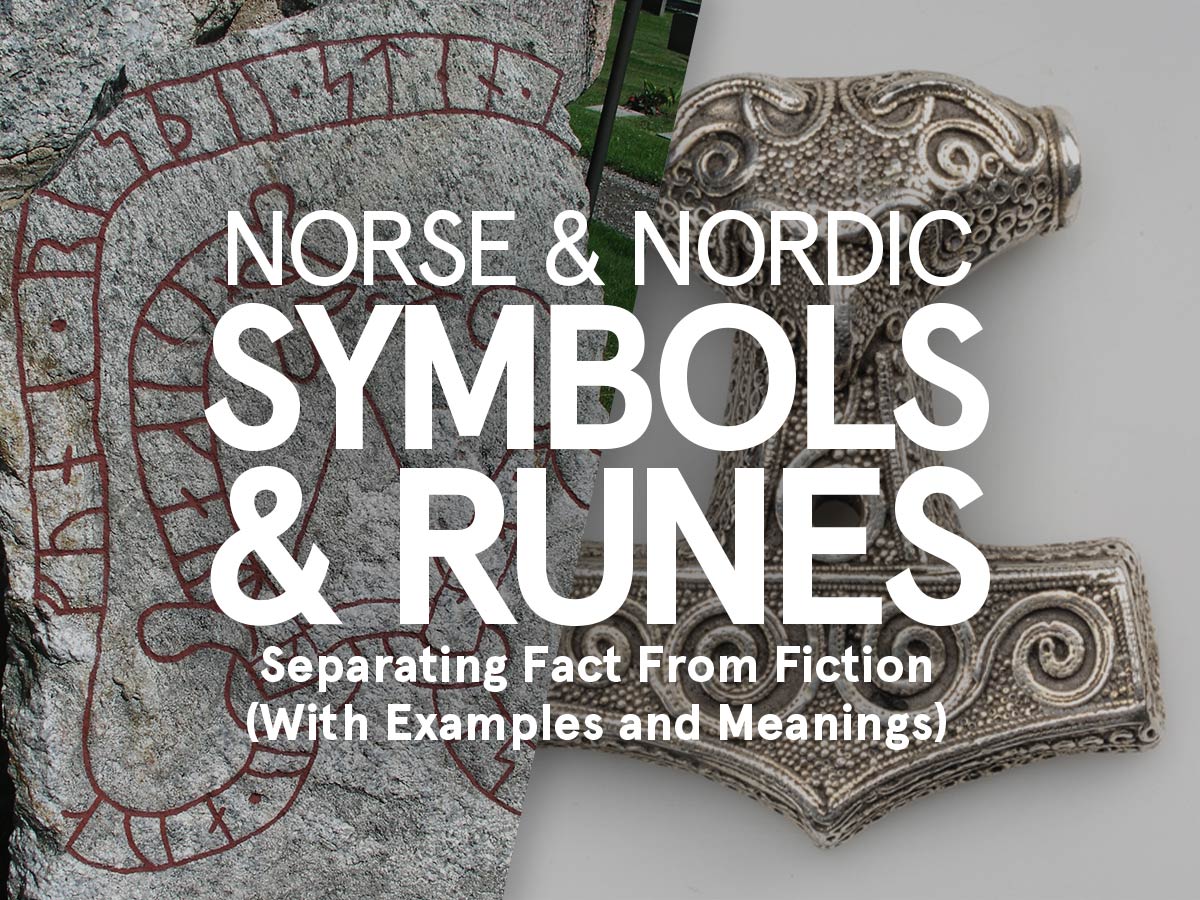
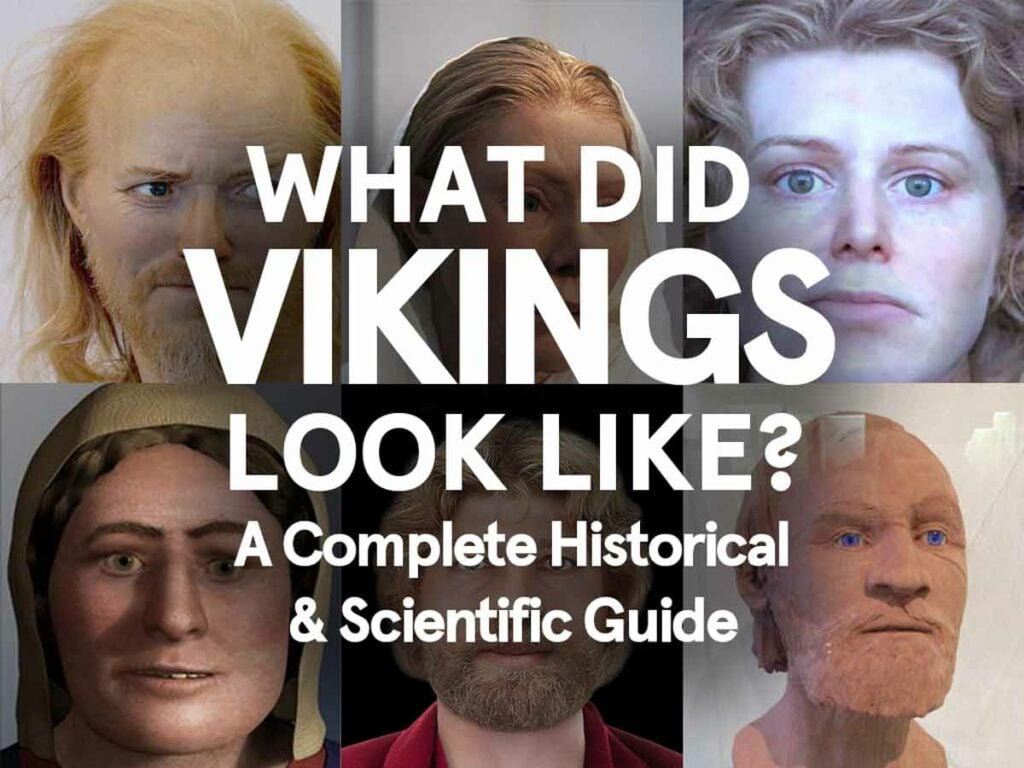
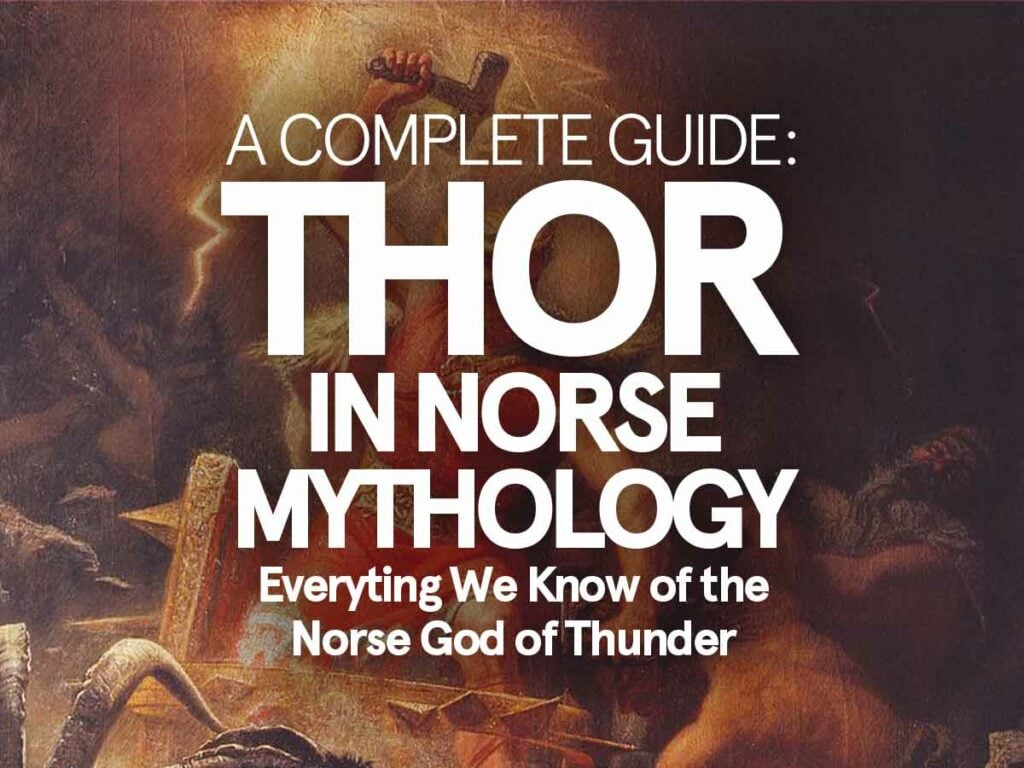
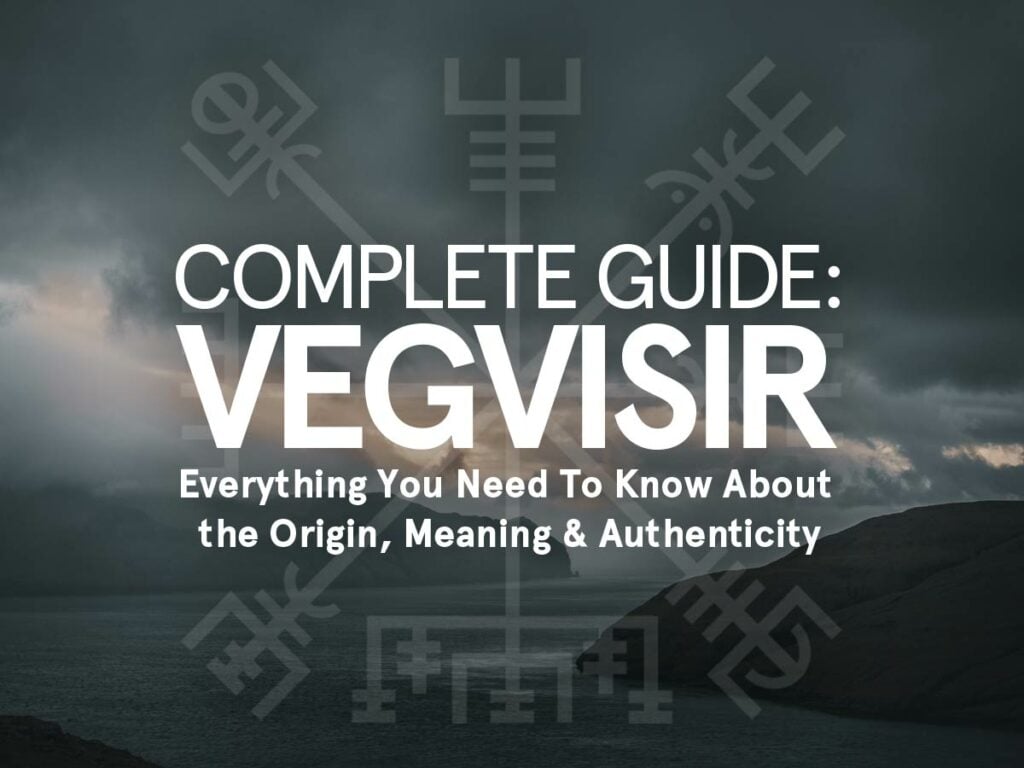
Hi Karl,
I am curious about the following symbol: it looks like an arrow pointing upward, with a leaflike body drawn over the arrow and a bird head on the top where the arrow head would be. It comes up if you google norse friendship symbol. Do you have any ideas around this one? Cheers, Christina
Hi Christina!
I haven’t seen that symbol but it looks really cool. I believe it’s a combination of 4 different symbols illustrated by an Estonian clothing/accessory brand:
https://www.instagram.com/p/B2Z8YJvHolc/
https://valhyr.com/pages/about-us
I really like the look of their symbols, but they aren’t necessarily all based on historical symbols (though certainly inspired by Norse rune art, and really nice too!).
Hi Karl,
I’ve seen images of the “protects against poison” apparently a Norse symbol flying around the internet but can’t find any history behind it, wondering if you have any info on the symbol? It’s a long jagged X.
Best
Johan
Thanks for all this information. It will take me a while to digest it. I heard about runes as a divination tool a couple of decades ago, but it never occurred to me they were alphabets. My mom’s side of the family is from Finland and came to the Michigan and Wisconsin area of the US in the late 1800’s. I don’t know if there is a family connection with countries near Finland. I never learned how to “divine” with runes but I like the feel of them in my hands for some reason. Your information on the history of runes makes me wonder.
Thanks for reading Liz!
Finland certainly has a connection to the Norse runes, as Norsemen and their ancestors have settled on the coast of Finland since the Bronze Age. Whole runestones have been found off the coast of Finland as well, and it’s clear that there was a steady flow of Vikings heading east to Gardarike via Finland.
You can read more here about Finnish roots here: https://nordicperspective.com/facts/finnish-heritage-origin-of-finns
Just one question, how is the correct way for the runes to interact with, i mean, is there a way to elaborate a word or a bigger symbol including some of them? Are there some rules about it?
Hi Miguel!
The only rules regarding rune usage would likely be to either:
A) Use them as sounds (such as our modern-day letters in the alphabet)
B) Use them to represent their meaning (such as ᚦ, “Thurs”, being connected to the Jötunns, Frost Giants, and the Æsir Thor, who you might be familiar with)
Ultimately we don’t know exactly how the Old Norse people used the runes other than the aforementioned uses, so it’s possible that they used them in other ways too, especially as they considered them to hold magical powers in some cases (a specific magic they called “Seidr”).
If you have any more specific questions just let me know!
Karl
It’s so odd how Rudolph Kuch basically wrote a bunch of Norse/viking fanfiction and tried to pass it off as fact. He should have written fiction instead!
He did have a very active imagination, that’s for sure!
In general, it’s pretty common that people take liberties in interpreting old symbols and especially their meanings. Just google “Viking symbols” and one of the most commonly seen ones is the Vegvísir, which is not a symbols used by the Vikings as far as we know and wasn’t even documented or inscribed anywhere until 800 years after the Viking Age ended.
So yeah… people in general tend to have active imaginations. 🙂
Curious I have seen some runes over layer into others is that something that was historically used and if so how would that be done?
Karl I’m looking for a symbol I can use for Christmas. I’m creating a logo for a fan of the Celts and Vikings and wondering where I can find such and element for usage. Thank you in advance.
Dear Karl,
I’m looking for possible connections between scythian and celtic/germanic art. I’m sure, you came upon the beautifully designed golden items of the scythian culture. The way, creatural figures merge into tribals. So, since European people seem to be derived from pontic steppe people genetically, do you think, that also European ancient art could be connected to it?
Hi Martin!
Very interesting theory! It seems likely that at least parts of human culture would travel with the migrating humans as they made their way north, but I haven’t really looked into Scythian art at all so not sure how feasible it would be in the end. Let me know if you find anything of interest in your studies!
Karl
Superb posts! Have a look at my page Webemail24 where I also put in extra effort to create quality information about Cleaning Services.
I had a dream, and my mother came to me in a crystal shop, and she showed me a crystal necklace with something attached which I can’t see now but will know it when I find it and she left me with the word madyr. I can’t find a proper meaning for this word except red or red deer. I’m not sure what she was getting at and what the message is she was sending. Any help with the word would be gratefully accepted
Cool dream! Admittedly, I don’t have any experience in attributing meaning to dreams, but the closest Old Norse word I can think of is “maðr” (Icelandic: “maður”, Younger Futhark: “ᛘᛅᚦᚱ”) which means “man”. Then there is “máttr” (Younger Futhark: ᛘᛅᛏᛏᚱ) which can be translated to “strength”, or “health”.
Best of luck!
–Karl
Hello- I’m looking to get a tattoo representing my father, who recently passed. We’re Norwegian and he was very proud of his Nordic Viking ancestry.
Is there runs or symbol or other Norse Viking representation of father or dad?
Thank you!